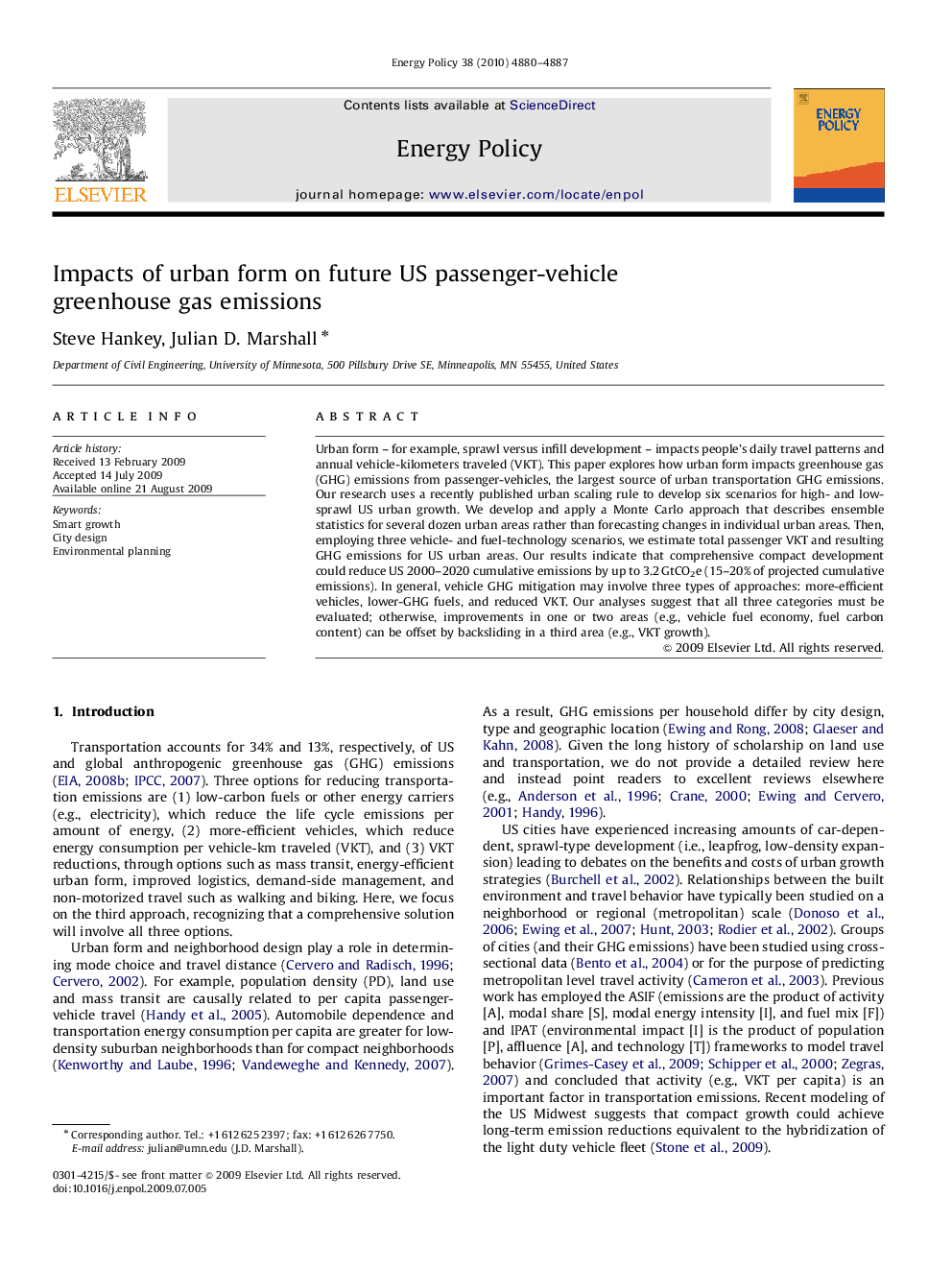| Article ID | Journal | Published Year | Pages | File Type |
|---|---|---|---|---|
| 996422 | Energy Policy | 2010 | 8 Pages |
Urban form – for example, sprawl versus infill development – impacts people's daily travel patterns and annual vehicle-kilometers traveled (VKT). This paper explores how urban form impacts greenhouse gas (GHG) emissions from passenger-vehicles, the largest source of urban transportation GHG emissions. Our research uses a recently published urban scaling rule to develop six scenarios for high- and low-sprawl US urban growth. We develop and apply a Monte Carlo approach that describes ensemble statistics for several dozen urban areas rather than forecasting changes in individual urban areas. Then, employing three vehicle- and fuel-technology scenarios, we estimate total passenger VKT and resulting GHG emissions for US urban areas. Our results indicate that comprehensive compact development could reduce US 2000–2020 cumulative emissions by up to 3.2 GtCO2e (15–20% of projected cumulative emissions). In general, vehicle GHG mitigation may involve three types of approaches: more-efficient vehicles, lower-GHG fuels, and reduced VKT. Our analyses suggest that all three categories must be evaluated; otherwise, improvements in one or two areas (e.g., vehicle fuel economy, fuel carbon content) can be offset by backsliding in a third area (e.g., VKT growth).
